Nasdaq's waning momentum clarifies its analogs
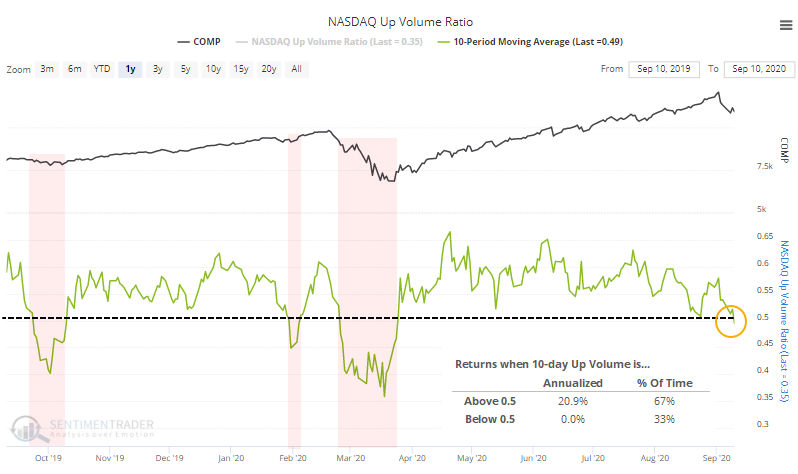
Arguably the two biggest stories in sentiment this week are the continued explosion in speculative options activity and nascent signs that the momentum bubble in the Nasdaq has been pricked. The two are related and will have a big impact on overall market returns going forward. We won't get an update on how options traders behaved this week until Saturday.
As for the Nasdaq's momentum, earlier in the week, we saw that the swift price declines in the Composite Index and its underlying components were leading to a quick deterioration in its momentum. Now the 10-day average of its Up Volume Ratio has slid below 50%.

There are all kinds of ways to define market environment and momentum, and using an average of Up Issues or Up Volume is effective on a short- to medium-term time frame. We can see from the chart that the Nasdaq's annualized return when 10-day Up Volume is above 50% is a very robust +20.9% while below 50% it's a lowly zero. The Composite tends to struggle when Up Volume is negative but not negative enough to be oversold.
This ended the Nasdaq's 3rd-longest streak in 35 years with 10-day Up Volume above 50%.
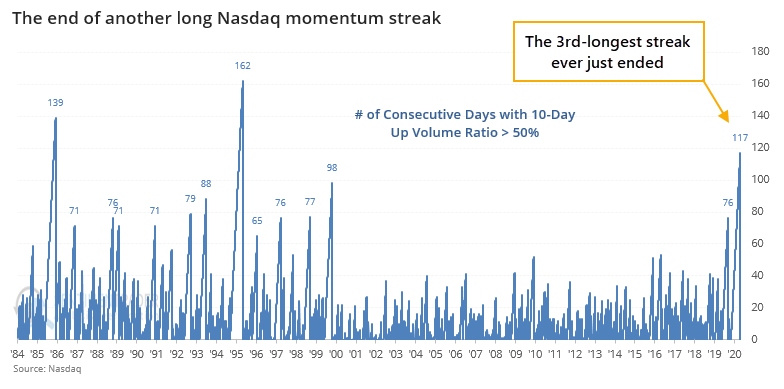
The ends of prior streaks led to mixed returns. The last two were nasty, but the others were wildly inconsistent.
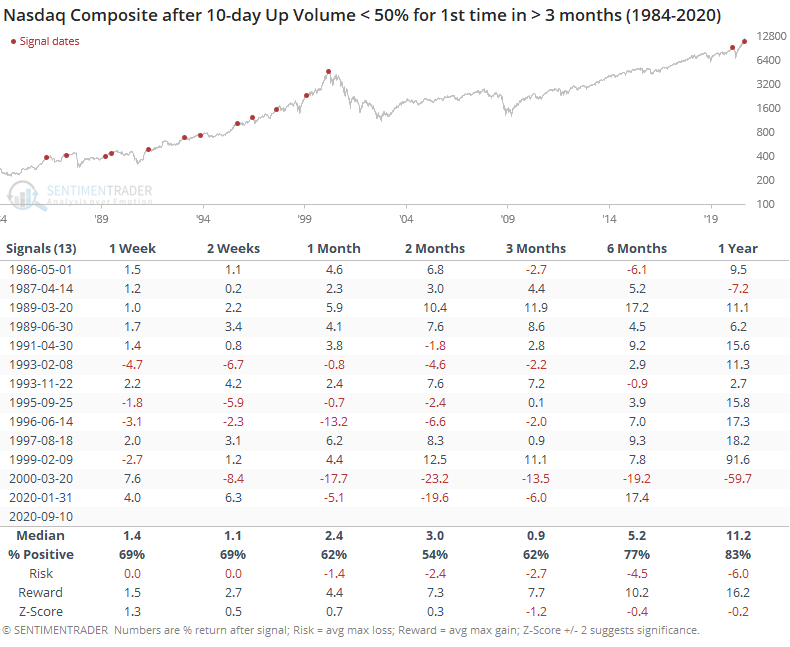
It was more consistently positive in the 1980s. Since 1990, returns were worse. Over the next 2 months, there were 3 positive signals and 6 negative ones.

There is a popular method of analysis that tends to get a lot of attention which is essentially just, "Hey, look at this chart, it looks just like..." and that "just like" is usually some extreme event in history. Analogs are dangerous but occasionally useful if done objectively, which is almost never.
To guard against that danger, we use all available history, and with clear rules. This helps to avoid cherry-picking extreme examples, and it's also why most of the time it doesn't give us much more of a basis from which to judge potential risk/reward.
Last week, we looked at prior major peaks in the Nasdaq Composite, seeing that most of the time the index went straight up then pretty much straight down. Now that the Nasdaq has seen some volatility, let's revisit that.
Below, we can see the price path in the Nasdaq leading up to and following the highest-correlated 50-day stretches in the past ~50 years.
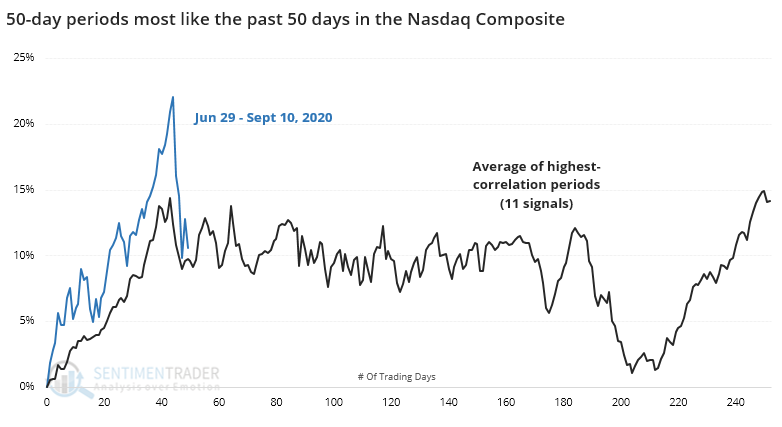
When the index showed high upside momentum then started to wobble, the median price path going forward was quite volatile. That's mostly due to wide variation among the precedents. The individual thumbnails show how drastically different they unfolded (dates are from the start of the 50-day windows).
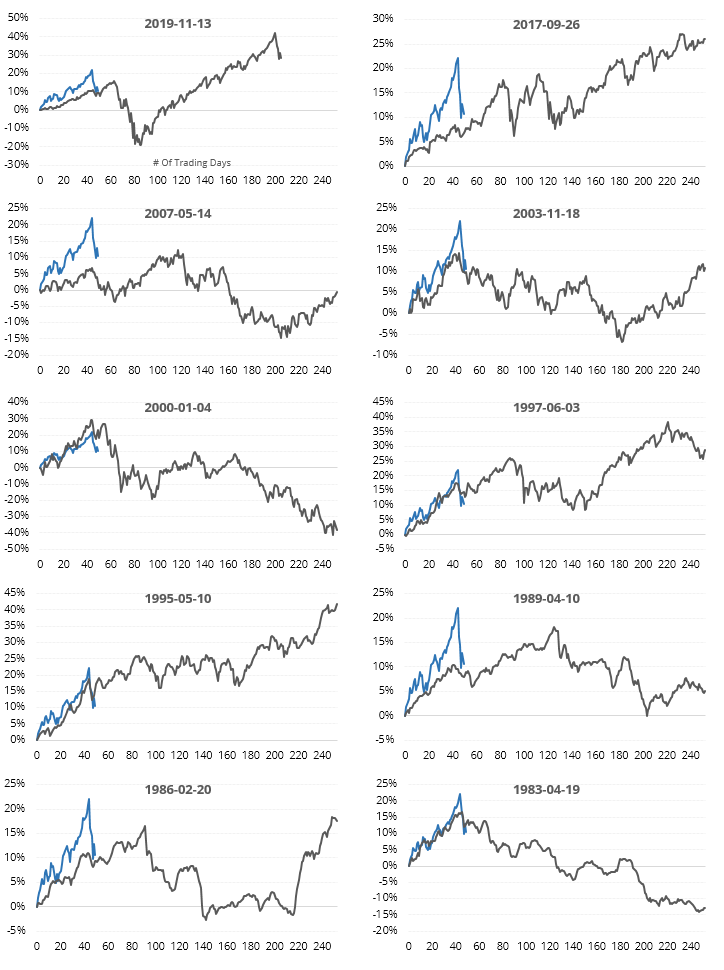
Putting some numbers to it, the table below shows forward returns at the end of the 50-day windows.
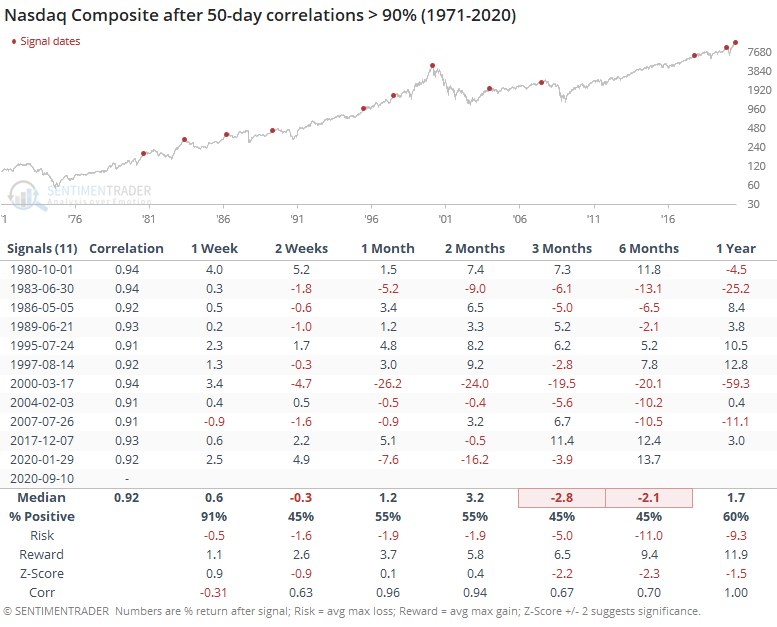
The Nasdaq's average forward returns weren't great, and the risk/reward was poor. There were a couple of exceptions (Oct 1980 and Jul 1995) that didn't really see any selling pressure for up to 6 months later. The others tended to see a negative return between 1-6 months later.
The last row in the table, labeled "Corr", shows the correlation between that time frame's return and the return 1 year later. The correlation was negative after 1 week, meaning that the Nasdaq's initial move after these windows was often a head-fake. But its direction over the next month was almost perfectly in line with its direction over the next year.
The volatility over the past week has been a wake-up call to any new investors. After a long stretch of calm, the Composite swung more than 1% for each of the past 5 days, and its average absolute daily change has spiked above 3%.
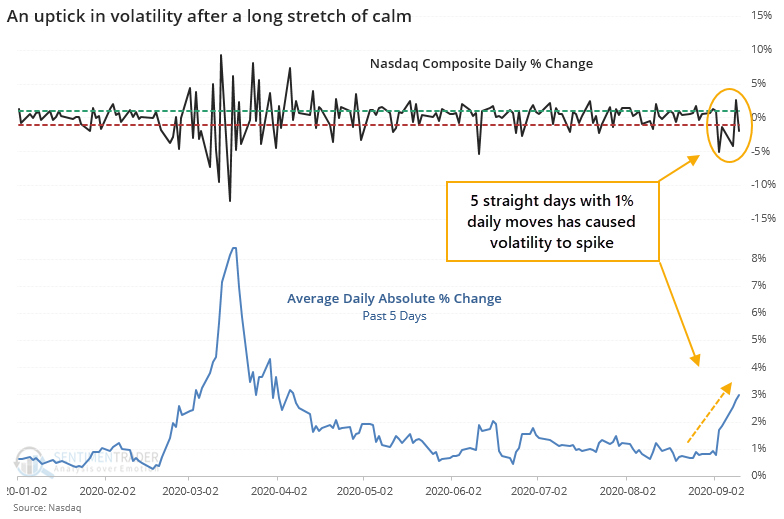
There haven't been many times when volatility has returned so suddenly, so soon after the Nasdaq had been at a 52-week high.
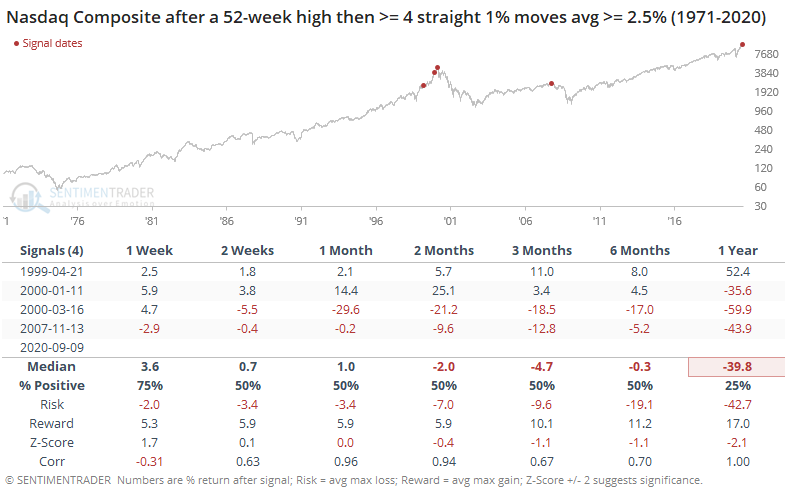
We haven't seen any strong evidence that the Nasdaq has peaked, just some modest suggestions that it potentially has. If so, any bounce-back in the coming days should be modest relative to its recent declines, and shouldn't last long. If it violates that, and especially if it hits a new high, most of the negatives we've seen would be reset.

